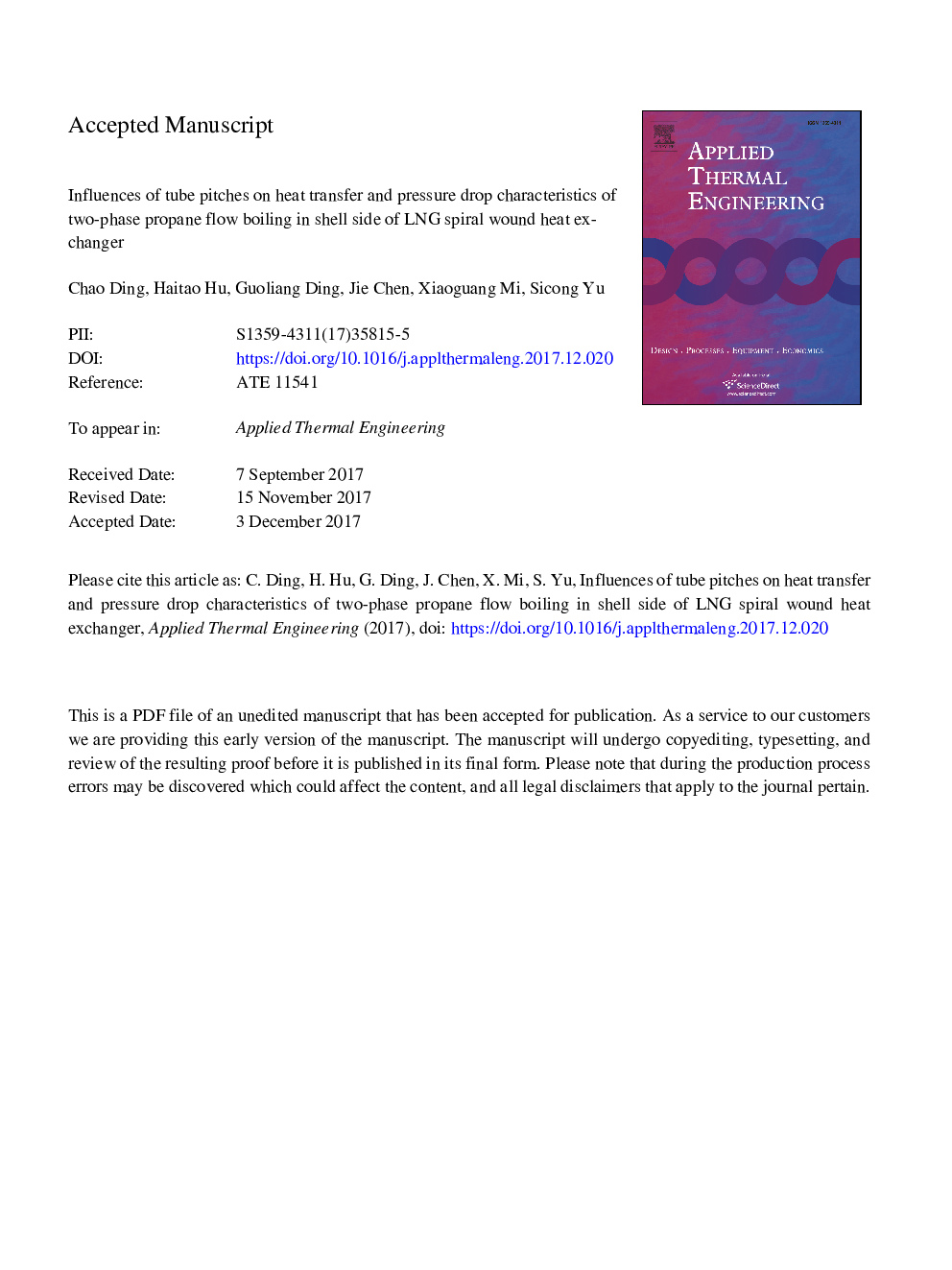| Article ID | Journal | Published Year | Pages | File Type |
|---|---|---|---|---|
| 7046184 | Applied Thermal Engineering | 2018 | 47 Pages |
Abstract
For clarifying the influences of tube pitches on heat transfer and pressure drop characteristics of two-phase flow in the shell side of LNG spiral wound heat exchanger, experiments are performed on test samples covering the longitude tube pitch of 2-6â¯mm and the radial tube pitch of 1-4â¯mm. Propane is used as the tested fluid. The operational conditions cover the vapor quality of 0.2-0.9, the mass flux of 40-80â¯kgâ¯(m2â¯s)â1, the heat flux of 4-10â¯kWâ¯mâ2, the pressure of 0.25â¯MPa and the temperature of â19.4â¯Â°C. The uncertainties of tested heat transfer coefficients and pressure drops are within 14.4% and 4.0%, respectively. The results indicate that, as the longitude tube pitch increases, both the heat transfer coefficient and pressure drop decrease; while as the radial tube pitch increases, the heat transfer coefficient always decreases for the mass flux of 60 and 80â¯kgâ¯(m2â¯s)â1, but varies non-monotonously for the mass flux of 40â¯kgâ¯(m2â¯s)â1; and the pressure drop decreases maximally by 61% with the increasing radial tube pitch. Two-phase heat transfer and pressure drop correlations reflecting the influences of tube pitches are developed, and the deviations of the predicted heat transfer coefficients and pressure drops from the experimental data are withinâ¯Â±â¯20% andâ¯Â±â¯25%, respectively.
Related Topics
Physical Sciences and Engineering
Chemical Engineering
Fluid Flow and Transfer Processes
Authors
Chao Ding, Haitao Hu, Guoliang Ding, Jie Chen, Xiaoguang Mi, Sicong Yu,
